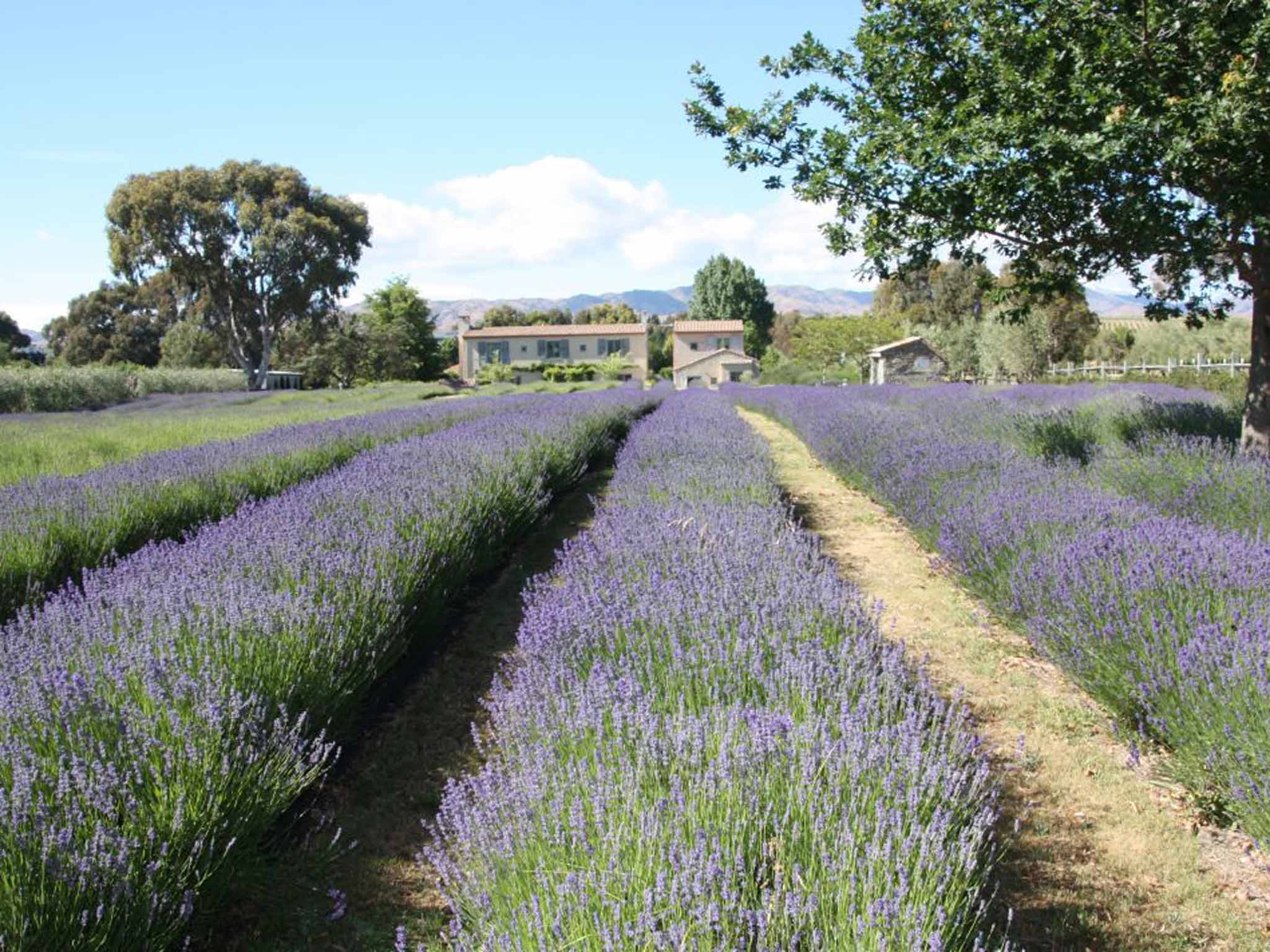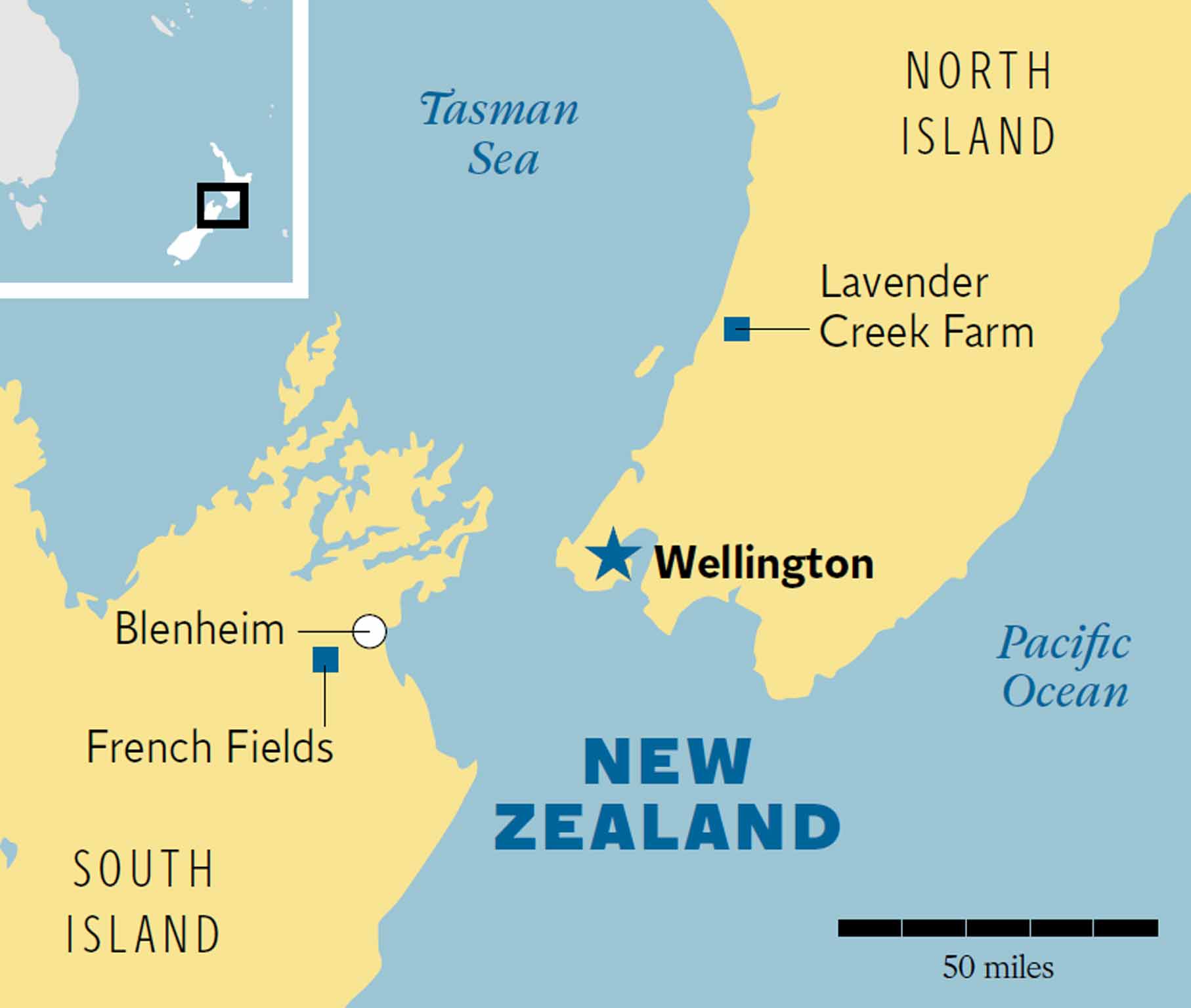New Zealand’s fragrant lavender farms: Heavenly scents and local colour
Research for her first novel took Lindsay Hawdon and her two young sons to the Land of the Long White Cloud and its fragrant lavender fields

Your support helps us to tell the story
From reproductive rights to climate change to Big Tech, The Independent is on the ground when the story is developing. Whether it's investigating the financials of Elon Musk's pro-Trump PAC or producing our latest documentary, 'The A Word', which shines a light on the American women fighting for reproductive rights, we know how important it is to parse out the facts from the messaging.
At such a critical moment in US history, we need reporters on the ground. Your donation allows us to keep sending journalists to speak to both sides of the story.
The Independent is trusted by Americans across the entire political spectrum. And unlike many other quality news outlets, we choose not to lock Americans out of our reporting and analysis with paywalls. We believe quality journalism should be available to everyone, paid for by those who can afford it.
Your support makes all the difference.Most people come to New Zealand to see its spectacular scenery, its unique flora and fauna, including its 245 species of birdlife, most of which are endemic. Others come for the giddy thrill of its extreme sports or, more recently, to follow in the filmic footsteps of The Lord of the Rings. Of course, we hoped to experience all of these, but primarily my two young boys and I had come to the “Land of the Long White Cloud” in search of something else – lavender.
I was writing a novel about colours. We'd already travelled through India and China in search of saffron yellow and celadon green and now found ourselves in warm winter climes looking for the colour violet. Driving down the bumpy track to Lavender Creek Farm, near the town of Otaki on the Kapiti Coast of North Island, we can smell the flowers before we can see them – a sweet, vaporous scent, carried on a warm spring breeze. The farm is tucked between gentle hills that roll onwards and upwards into glacial mountains in one direction and flatten out into the vast swelling sea in the other. The track twists and turns and then suddenly, rounding the bend, we see them. A field of blue, swaying in the wind, changing from metallic mauve to a deep violet as cloud-shadows pass across it. It's beautiful.
The farm is home to 7,000 lavender plants and 330 varieties: Pacific blue, English, Greek and Grosso, and the entire production process takes place on site. We are greeted by Susi White. She is gruff at first, not big on manners, but when you get her talking about lavender, her face lights up, and she relays stories of festivals and lavender production in staccato sentences, fired out like bullets.
Her husband, Vaughan, on the other hand, is welcoming and more melodic in his approach to visitors. Smiling broadly, he sing-songs to the boys to follow him in his wheelchair (he has lived with multiple sclerosis for the past 15 years) off-road, through the orchard to a natural spring stream. They spend the afternoon catching tadpoles and minnows while Susi teaches me all about lavender, the flower of the romantics. It's right up there with vineyards and olive groves – a blend of violet and mauve, the colour of the sky in the fleeting moments after sunset or sunrise.
We have made use of it for more than 2,500 years, Susi tells me; lavender has scented perfumes, oiled baths, healed our scars and cuts, cured insomnia and allegedly insanity too. She proudly shows me the intricacies of steam distillation in the small factory outhouse, how the hot vapours force the lavender glands to burst out scented oil, how the cold separates it from the water. It takes 50kg of lavender to make just 50ml of oil.
Later that evening I sit on the patio outside the small B&B cottage that Susi and Vaughan rent out, covered in lavender cologne, sipping a glass of chilled white wine from the nearby Celtic Organic Winery, as the boys run up and down the tidy rows of blue flowers. Bulgaria may be the world's biggest lavender provider, France a close second, but New Zealand knows how to mix the allure of the flower with good food and wine for the weary traveller in search of a romantic getaway. They plant flowers here from November to January, so when England is in the depths of winter it's the perfect time to venture down under, following the lavender trail from farm to farm.
The next day, we meander the hour's drive along the coast to the world's most southerly capital, Wellington. It is also the world's windiest, situated on the Cook Strait (the River of Wind), a corridor between the South and North Islands. On average, Wellington sees 173 days of winds above 32 knots, 22 of those above 40.
After hours of wandering the polished flagstones battling the strong gusts, discovering the delights of the Te Papa Tongarewa (New Zealand's national museum) and taking high tea at Louis Sergeant tea rooms, we travel out of town to the suburb of Mirimar. Here, we dine at The Larder, a popular restaurant, run by chef Jacob Brown and his wife Sarah. They lavish us with a lavender-inspired feast of pea-soup drizzled with lavender oil and baby Paua violet-coloured sea shells, with pearls of pork belly and tentacles. We finish with cheese, lavender honey and lavender and blood orange jelly.
Windswept and rose-cheeked, the next day we catch the ferry over to South Island, a three and a half hour journey across the dark blue, choppy waves of the Cook Strait, pale skies above, streaked with wisps of strata cloud. There is light everywhere, splashing silver as froth cascades over the side of the slicing bow. For all its smallness, New Zealand manages to feel immense. Surrounded by sea and sky, swept by salty winds and sun rays, it's a dichotomy of soaring mountains and deep fiords, rainforests of conifer, beech and carpets of fern, marshlands of sprawling yellow broom, flax and bulrushes.
Driving from the ferry docks at Picton, we travel a short distance south to Blenheim and the French Fields Bed and Breakfast Lavender Farm, beneath the rolling hills of Marlborough, renowned for its vineyards. We arrive at a Provençal-styled farmhouse of flaking blue shutters, sanded walls, and chain-worn floorboards, just as a truck is pulling into the drive. There is a loud humming noise in the air as we clamber out of the car.
“You've arrived just in time,” exclaims Ruth Struthers, our host. “The bees are here.” Right on cue, two men in beekeeping outfits clamber out of the truck and begin transporting five heavy beehives from the back of it. “They'll be here for the next three months,” she tells us. “To flavour their honey with lavender pollen.”

The beehives are taken to the far end of the lavender field, the boys following a safe distance behind. The worker bees are already venturing out, busy making their way from flower to flower. We wander up and down the rows, listening to the gentle hum resonating around us as, slowly, the sun sinks behind the high, rolling hills.
That night all is still bar the rustle of leaves in the farm's olive groves, but we are woken at sunrise by a hum so loud that the boys at first think the world has been taken over by giant killer bees. It turns out to be a trio of helicopters which have set off across the adjacent vineyards to ward off the morning's frost with the warmth from their propellers. There is something satisfyingly tranquil about being a spectator to an agricultural community of wine, olive and lavender growers, watching the daily grind amid such beauty, surrounded by the decadence and the romance that comes with such produce.
We breakfast on the patio, beneath the dappled shade of a grapevine canopy, looking out at the farm and the view as the bees are busy pollinating. Later, we cycle out to the Brancott Vineyard Estate and lounge around on giant bean bags in the garden as our food (and my sauvignon blanc) is laid out in front of us.
We cycle back to sit once again amid the lavender, as gliders, biplanes and birds swoop back and forth in the sky above. There we stay, surrounded by blue; even the bees seem calm in the mystical, peaceful haze that seems to hover above the lavender rows.
Lindsay Hawdon's debut novel, 'Jakob's Colours', is published by Hodder and Stoughton, £14.99
Getting there
Discover the World (01737 214 291; discover-the-world.co.uk), offers a range of tailor-made holidays to New Zealand. A classic 21-day Discover Aotearoa self-drive offers a complete overview, with time to enjoy the lavender fields. It costs from £2,305pp including accommodation, some meals, vehicle rental, Interislander ferry and excursions.
Staying there
Lavender Creek Bed and Breakfast, Te Horo, Kapiti (lavendercreek.co.nz). Doubles start at NZ$85 (£39), B&B.
French Fields Bed and Breakfast, Blenheim, Marlborough (frenchfields.co.nz). Doubles start at NZ$525 (£239) B&B.
Visiting there
The Larder Restaurant, Wellington (thelarder.co.nz).
More information
Join our commenting forum
Join thought-provoking conversations, follow other Independent readers and see their replies
Comments